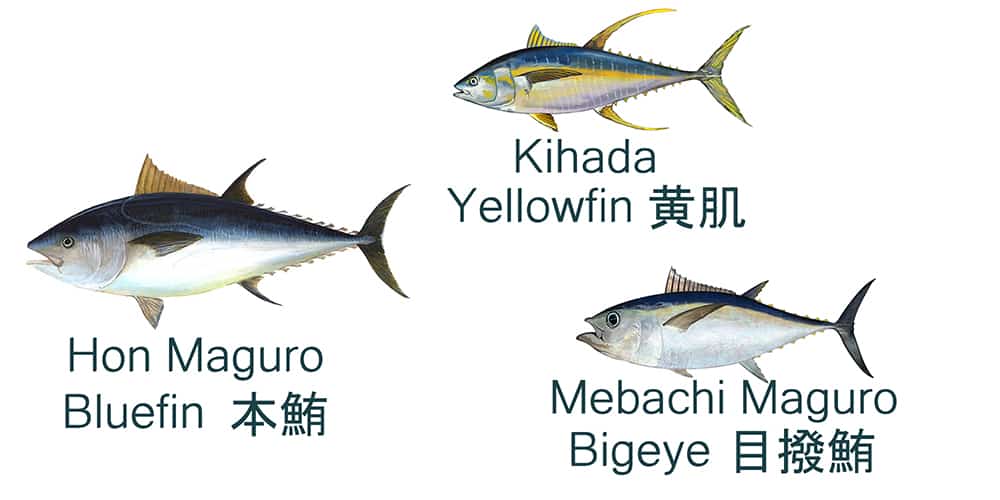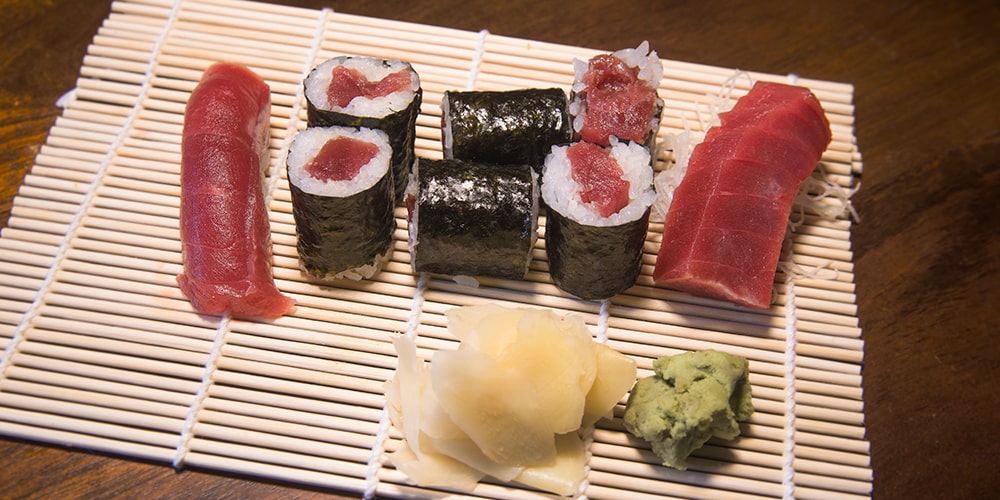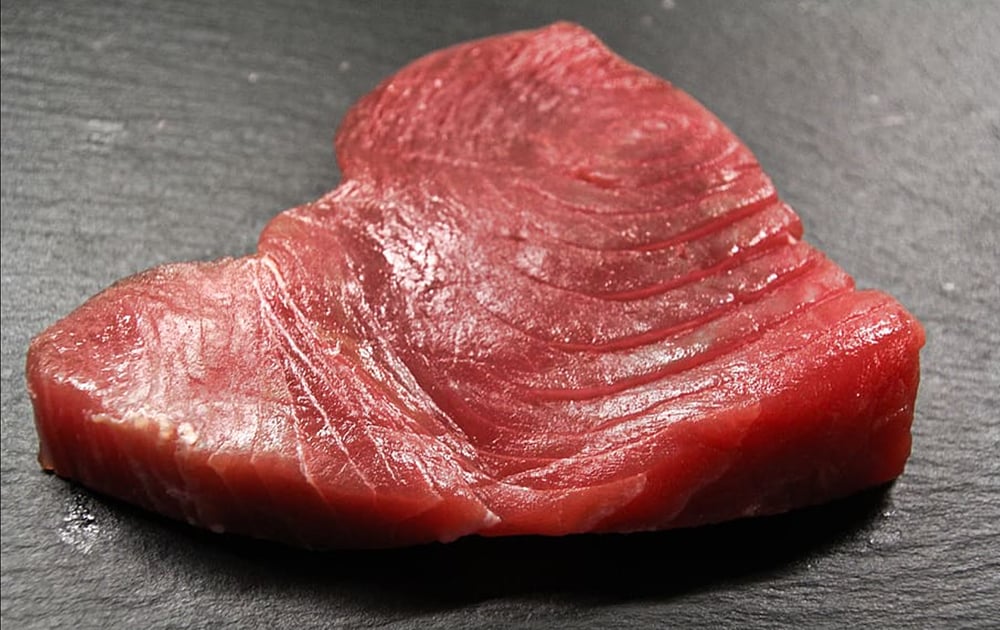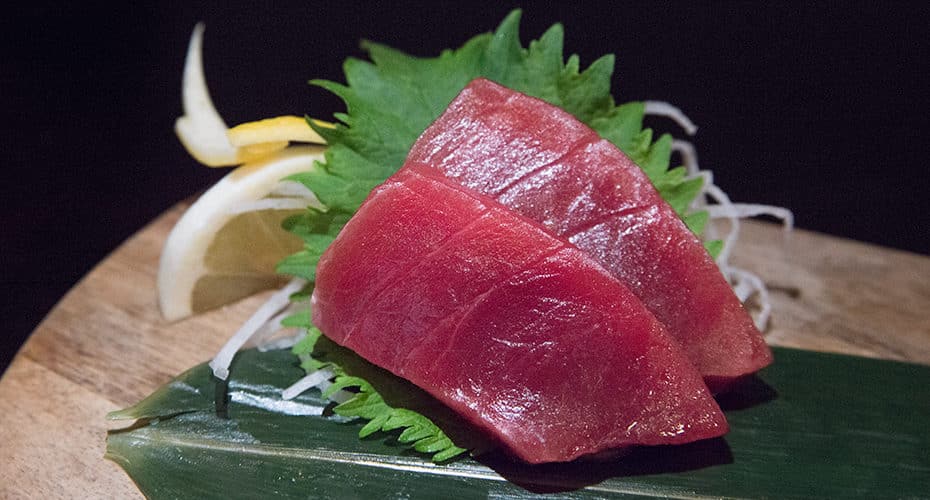Mebachi maguro is the most popular tuna for sushi and sashimi. But how does it compare to yellowfin and bluefin? And how does it taste?
This post answers those questions and includes information on the fish species, popular preparations, and nutritional value.
What is Mebachi Maguro?
The bigeye tuna is known as mebachi maguro in Japan. It’s probably the most common type of tuna for sushi and sashimi.
This mebachi maguro post is part of an informative sushi and sashimi guide. Check it out if you want to take your sushi game pro.
Bigeye Tuna vs Yellowfin
In Hawaii, both of these fish are called ahi tuna. Bigeye tuna (Thunnus obesus) is considered superior to yellowfin tuna (Thunnus albacares) in flavor. Mebachi has a richer taste, while yellowfin can also have a slightly fishy finish.
Both of these fish live in temperate and tropical waters around the world. They’re also the top two tuna by harvest volume.
Bigeye Tuna vs Bluefin Tuna
Bluefin is a larger and fattier type of tuna. Both have a rich and sweet flavor. Bluefin tastes even richer than bigeye, however. Bluefin tuna also has significantly more toro. And this fatty tuna belly has a much more tender texture.

What Does Bigeye Tuna Sushi & Sashimi Taste Like?
Raw bigeye tuna is slightly fatty, firm, and tender. It has a rich and sweet flavor with no fishiness. When mature, mebachi maguro has a deep red color. But fisheries are capturing an increasing number of juvenile fish. They are paler with a more sour taste.

Get fresh, sashimi-grade tuna delivered by Amazon. As an Amazon Associate, I earn commissions on purchases made through the links below.
Fatty Bigeye Tuna Belly
Most of the meat from mebachi maguro is lean and red (akami). But around the belly and skin, some adult fish have fattier toro cuts. This bigeye tuna toro is often chewy/sinewy, though. Chefs often dice it up to make negitoro or sear it and serve as nigiri.
Bigeye Tuna Sushi
Bigeye tuna is probably the most popular tuna for sushi. Nigiri and sushi rolls are the most common preparations.
Mebachi Maguro Nigiri
Bigeye tuna nigiri is widely available across North America and Japan. It’s the classic tuna nigiri. Slightly sour sushi rice complements the deep, sweet flavor of bigeye tuna.
Sushi chefs often smear wasabi under the fish, then mold it onto the rice.
Bigeye Tuna Rolls
Many popular rolls use mebachi maguro. The classic tekka maki and negitoro often use it. And so do spicy tunas and rainbow rolls.
Bigeye Tuna Sashimi
Sashimi is simply raw slices of fish. If you’ve ever eaten tuna sashimi, the odds are you’ve had bigeye tuna. Its deep red color is visually appealing, its texture is firm but tender, and its flavor is sweet and rich.

*The Japanese Bar may earn commissions on purchases made through this link.
Bigeye Tuna Nutrition
Mebachi maguro is a semi-lean fish with a lot of protein. A one-ounce piece of tuna has around 31 calories, 0.3 g of fat, 12 mg of cholesterol, 14 mg of sodium, 0 carbs, 7 g of protein, and 143 mg of Omega-3 fatty acids.
The primary downside to eating bigeye tuna is high levels of mercury. Adults should limit their intake of bigeye tuna to a few servings per month. Children should consume even less.
Source
31 Days of Sushi
If you find this post useful or enjoyable, I suggest you check out some of the other content in my 31 Days of Sushi campaign.
Every day in August I’ll share a new piece of content. Topics are centered around nigiri and maki sushi. I include sashimi info, as well.
It’s like an omakase of sushi information!
What Do You Think About Maguro?
Are you a fan of mebachi maguro, or do you prefer bluefin? I love the taste of both, but try to limit my bluefin intake due to the fisheries’ poor sustainability.
Also, what’s your favorite tuna dish?
Please share your thoughts by commenting below!
